
Industrial conglomerate GE Aerospace (NYSE: GE) reported revenue ahead of Wall Street’s expectations in Q3 CY2025, with sales up 36.2% year on year to $12.18 billion. Its non-GAAP profit of $1.66 per share was 13% above analysts’ consensus estimates.
Is now the time to buy GE Aerospace? Find out by accessing our full research report, it’s free for active Edge members.
GE Aerospace (GE) Q3 CY2025 Highlights:
- Revenue: $12.18 billion vs analyst estimates of $10.9 billion (36.2% year-on-year growth, 11.7% beat)
- Adjusted EPS: $1.66 vs analyst estimates of $1.47 (13% beat)
- Operating Margin: 18.9%, down from 20.3% in the same quarter last year
- Market Capitalization: $321 billion
Company Overview
One of the original 12 companies on the Dow Jones Industrial Average, General Electric (NYSE: GE) is a multinational conglomerate providing technologies for various sectors including aviation, power, renewable energy, and healthcare.
Revenue Growth
A company’s long-term sales performance can indicate its overall quality. Any business can put up a good quarter or two, but the best consistently grow over the long haul. Thankfully, GE Aerospace’s 10.4% annualized revenue growth over the last five years was solid. Its growth surpassed the average industrials company and shows its offerings resonate with customers, a great starting point for our analysis.
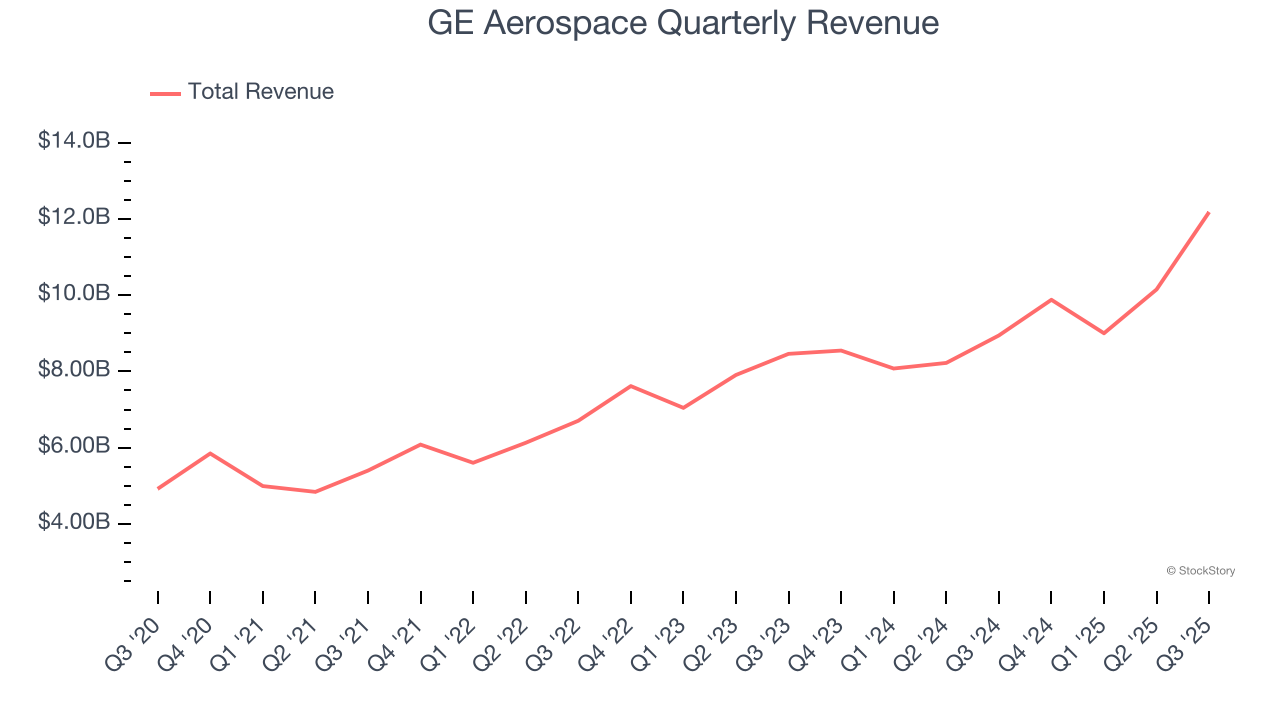
Long-term growth is the most important, but within industrials, a half-decade historical view may miss new industry trends or demand cycles. GE Aerospace’s annualized revenue growth of 15.2% over the last two years is above its five-year trend, suggesting its demand was strong and recently accelerated. 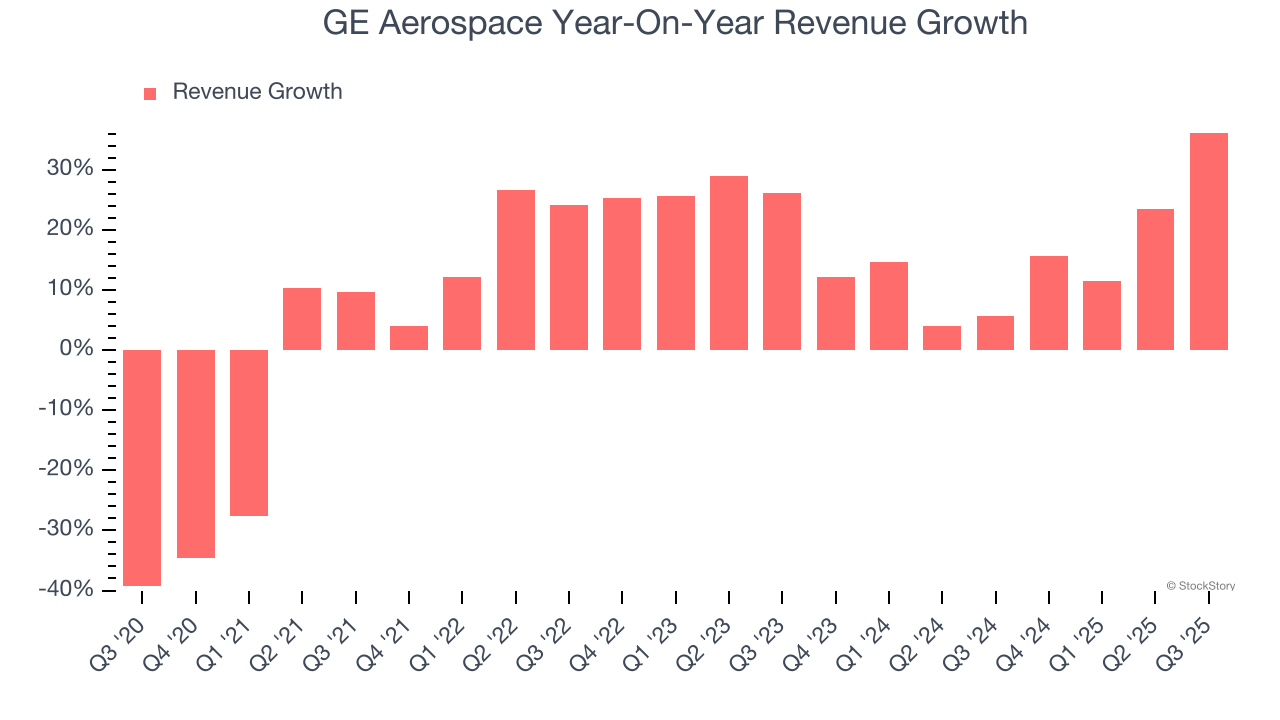
This quarter, GE Aerospace reported wonderful year-on-year revenue growth of 36.2%, and its $12.18 billion of revenue exceeded Wall Street’s estimates by 11.7%.
Looking ahead, sell-side analysts expect revenue to grow 10.6% over the next 12 months, a deceleration versus the last two years. We still think its growth trajectory is attractive given its scale and suggests the market is forecasting success for its products and services.
Software is eating the world and there is virtually no industry left that has been untouched by it. That drives increasing demand for tools helping software developers do their jobs, whether it be monitoring critical cloud infrastructure, integrating audio and video functionality, or ensuring smooth content streaming. Click here to access a free report on our 3 favorite stocks to play this generational megatrend.
Operating Margin
GE Aerospace has been a well-oiled machine over the last five years. It demonstrated elite profitability for an industrials business, boasting an average operating margin of 17.9%. This result was particularly impressive because of its low gross margin, which is mostly a factor of what it sells and takes huge shifts to move meaningfully. Companies have more control over their operating margins, and it’s a show of well-managed operations if they’re high when gross margins are low.
Analyzing the trend in its profitability, GE Aerospace’s operating margin rose by 10.7 percentage points over the last five years, as its sales growth gave it immense operating leverage.
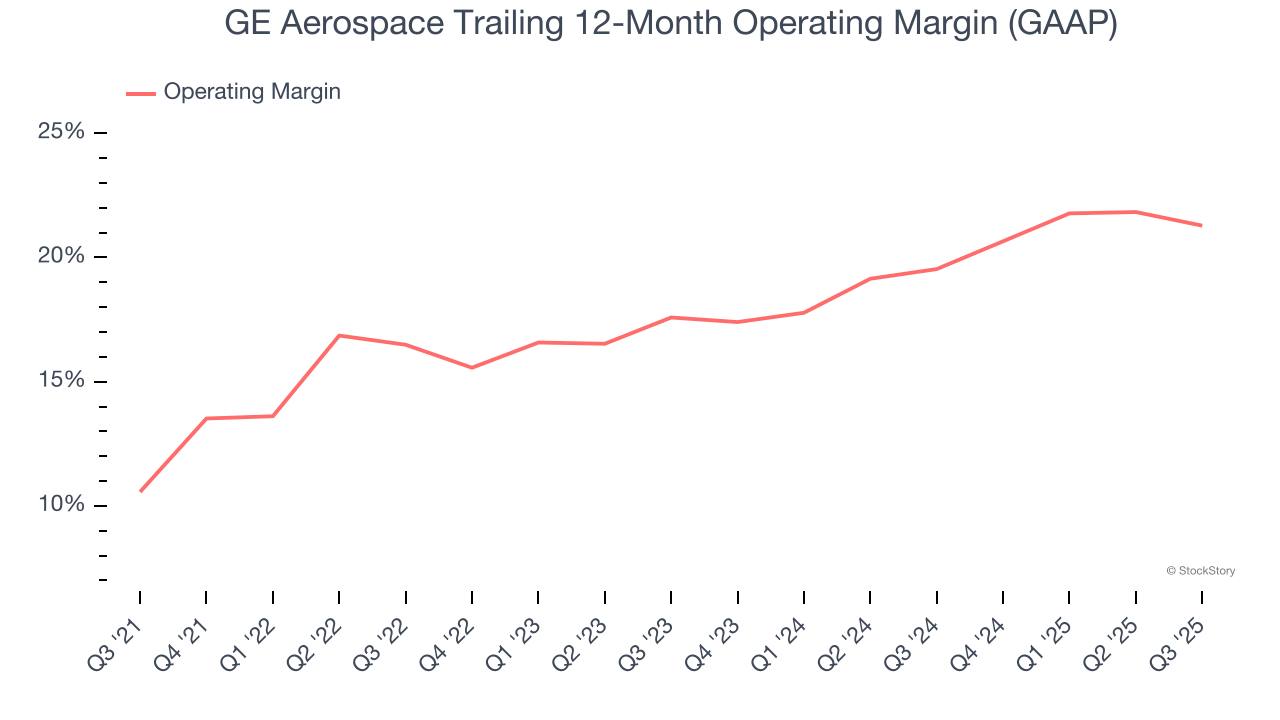
In Q3, GE Aerospace generated an operating margin profit margin of 18.9%, down 1.5 percentage points year on year. The reduction is quite minuscule and shareholders shouldn’t weigh the results too heavily.
Earnings Per Share
We track the long-term change in earnings per share (EPS) for the same reason as long-term revenue growth. Compared to revenue, however, EPS highlights whether a company’s growth is profitable.
GE Aerospace’s EPS grew at an astounding 34.7% compounded annual growth rate over the last five years, higher than its 10.4% annualized revenue growth. This tells us the company became more profitable on a per-share basis as it expanded.
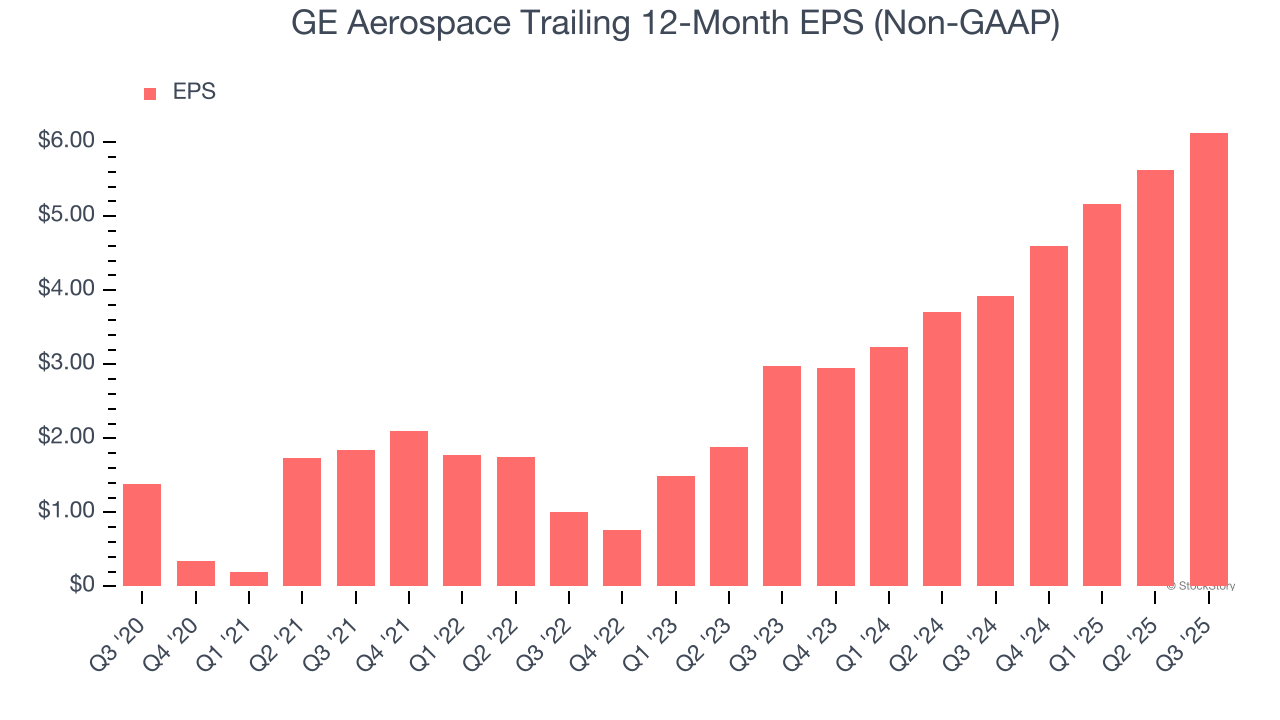
Diving into the nuances of GE Aerospace’s earnings can give us a better understanding of its performance. As we mentioned earlier, GE Aerospace’s operating margin declined this quarter but expanded by 10.7 percentage points over the last five years. Its share count also shrank by 3.7%, and these factors together are positive signs for shareholders because improving profitability and share buybacks turbocharge EPS growth relative to revenue growth. 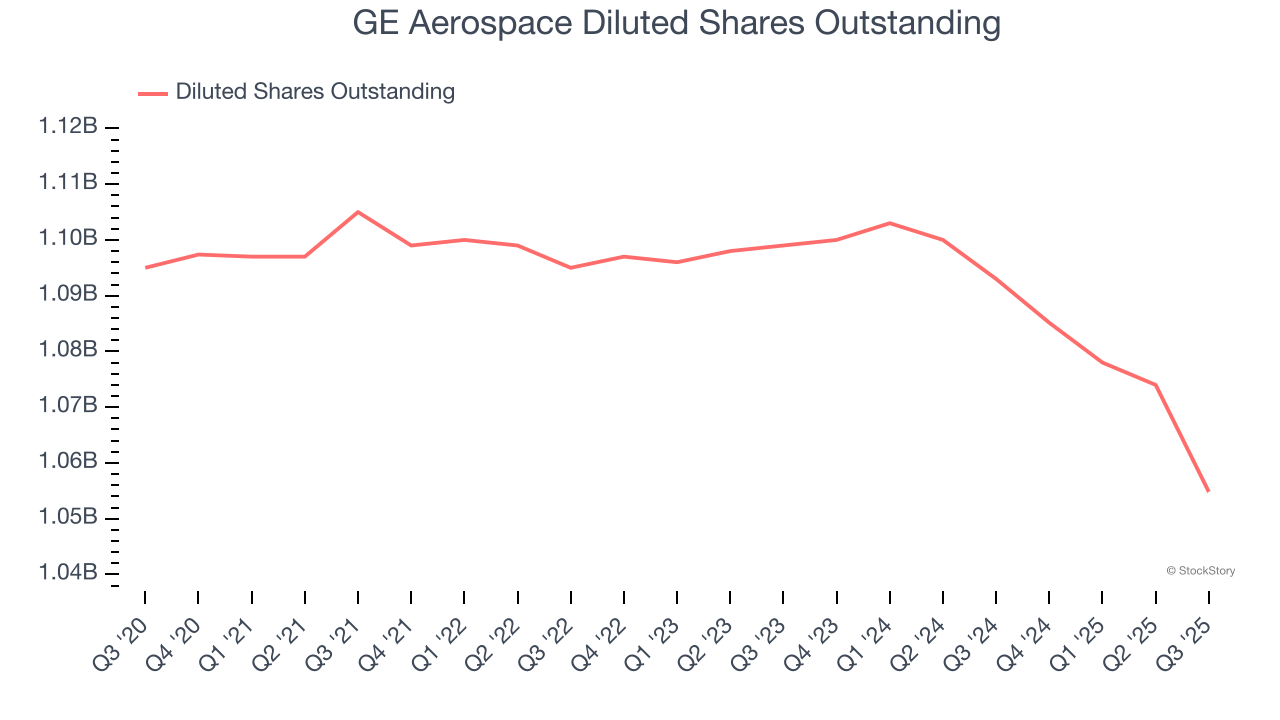
Like with revenue, we analyze EPS over a more recent period because it can provide insight into an emerging theme or development for the business.
For GE Aerospace, its two-year annual EPS growth of 43.6% was higher than its five-year trend. We love it when earnings growth accelerates, especially when it accelerates off an already high base.
In Q3, GE Aerospace reported adjusted EPS of $1.66, up from $1.15 in the same quarter last year. This print easily cleared analysts’ estimates, and shareholders should be content with the results. Over the next 12 months, Wall Street expects GE Aerospace’s full-year EPS of $6.13 to grow 3.6%.
Key Takeaways from GE Aerospace’s Q3 Results
We were impressed by how significantly GE Aerospace blew past analysts’ revenue expectations this quarter. We were also glad its EPS outperformed Wall Street’s estimates. Zooming out, we think this was a good print with some key areas of upside. The stock traded up 1.7% to $307.90 immediately after reporting.
Sure, GE Aerospace had a solid quarter, but if we look at the bigger picture, is this stock a buy? If you’re making that decision, you should consider the bigger picture of valuation, business qualities, as well as the latest earnings. We cover that in our actionable full research report which you can read here, it’s free for active Edge members.







